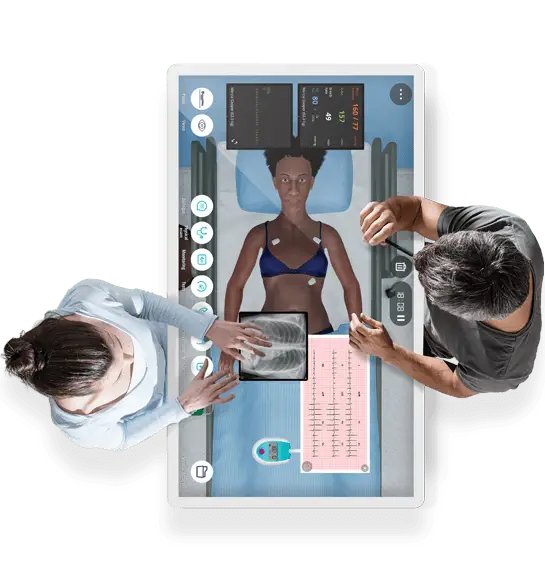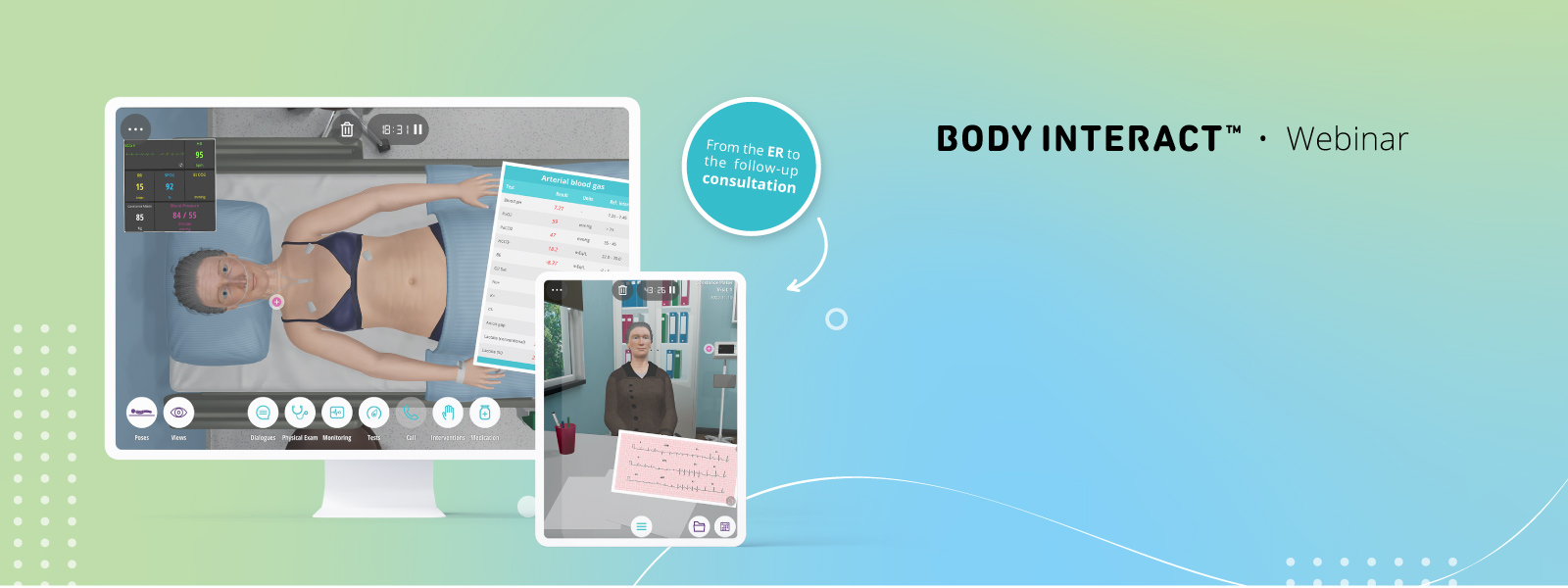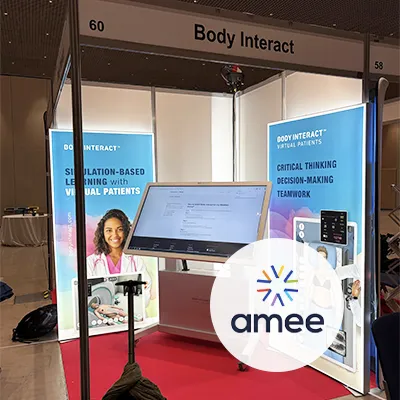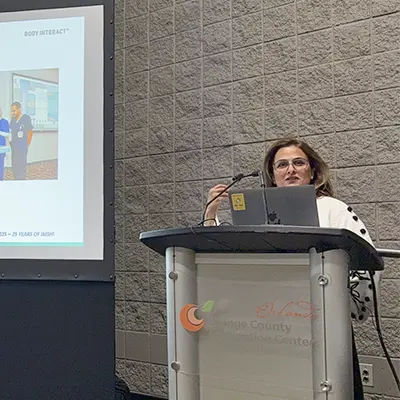Modern technology is rapidly transforming the Education and Continuous Medical Education landscape. In its turn, Virtual Patient Simulation has been introduced as a major solution to understanding the patient journey, promoting active learning, enhancing learners’ confidence, and fostering critical thinking. It has also proven to be the greatest solution to build a consistent multi-channel strategy and accelerate complete understanding and adoption of new and optimal treatment options.
To help promote these interactive and engaging experiences, Body Interact- Virtual Patient Simulator hosted a webinar under the theme of “Patient Journey through Virtual Patients”. Prof. Pedro Monteiro – Cardiology Specialist – was the special guest that guided the audience through Body Interact and share its diversity of clinical scenarios and versatility for Pre and Post graduate education.
Patient Journey: From the ER to the Consultation Office
Review the Body Interact webinar in the video below to learn how to apply Virtual Patient Simulation into your Program
Patient Stuart Grayson, 68 years old was brought to the Emergency department complaining of persistent chest discomfort. He has diabetes, high blood pressure, and high cholesterol. After assessing the patient, the 12 Lead-ECG revealed acute myocardial infarction with ST-Elevation. Required emergency medical care due to a STEMI.
The prognosis was positive but delicate. Mr. Grayson needed to be followed in the Consultation office. In the first visit, the 12 Lead – ECG revealed new-onset atrial fibrillation and while assessing the patient blood pressure was too high. Prescriptions were changed and some recommendations about diet and exercise were made. By his third consultation, all the values were back to normal.
By starting with an acute clinical scenario, Prof. Pedro Monteiro was challenged to start by assessing and stabilizing the patient. In the same way, just like in a real-life setting, Mr. Stuart couldn’t remember the name of his medication. Thus, we needed to use life-like clinical reasoning strategies: dialogue with the patient, perform the physical examination and request complementary diagnostic tests.
As in the Consultation scenario, it was necessary to check the results from previous exams and the impact of already prescribed medication. By pausing the scenario, he got the chance to discuss with the audience the rationale behind each decision or even promote interaction between participants to decide on the next steps.
Despite the fact that in real life we are not able to pause the clinical condition, in terms of educational methodology and strategy this feature enables the host of the session, the professor, or the Healthcare Professional, to extend the learning to more than just the treatment. It enables clinical discussion, critical thinking, and reflection on what the next step should be.
Pre and Post graduate Education with Virtual Patients
Based on the level of knowledge of the Body Interact users, the clinical scenarios can be implemented into different strategies and functionalities. According to Prof. Pedro, for Pre-graduated students, it would be important to focus on the symptoms, history collection, and vital signs interpretation. As for the Post-graduated Healthcare Professionals, the experience would be focused on the clinical condition treatment within the medication, interventions, as well as speed and effectiveness of the performance.
Nevertheless, no matter if it is a current or a future HCP, all users have the chance to have such an immersive learning experience, that “they forget where they are”, mentioned Prof. Pedro. The users get involved with active learning, through an engaging and controlled digital platform. They “feel the sense of responsibility and urgency”.
Check the research papers to learn more about the benefits of practicing with Virtual Patients in Medical and Nursing Education.
The right tool to engage Healthcare Professionals
From in-person to online practice, Virtual Patient Simulation assumed a range of benefits from enhancing clinical reasoning, promoting decision-making skills, and leveraging knowledge, competencies, and attitudes acquisition.
According to Prof. Pedro, thanks to the Body Interact variability of clinical scenarios and apart from the traditional classroom setting, the tool can be implemented in several locations and different audiences:
- Symposiums and Scientific Congresses
- Clinical Sessions and Webinars
- Online Courses

Ready to introduce Virtual Patient Simulation into your Strategy?
Schedule a 15 min meeting with the Body Interact team








